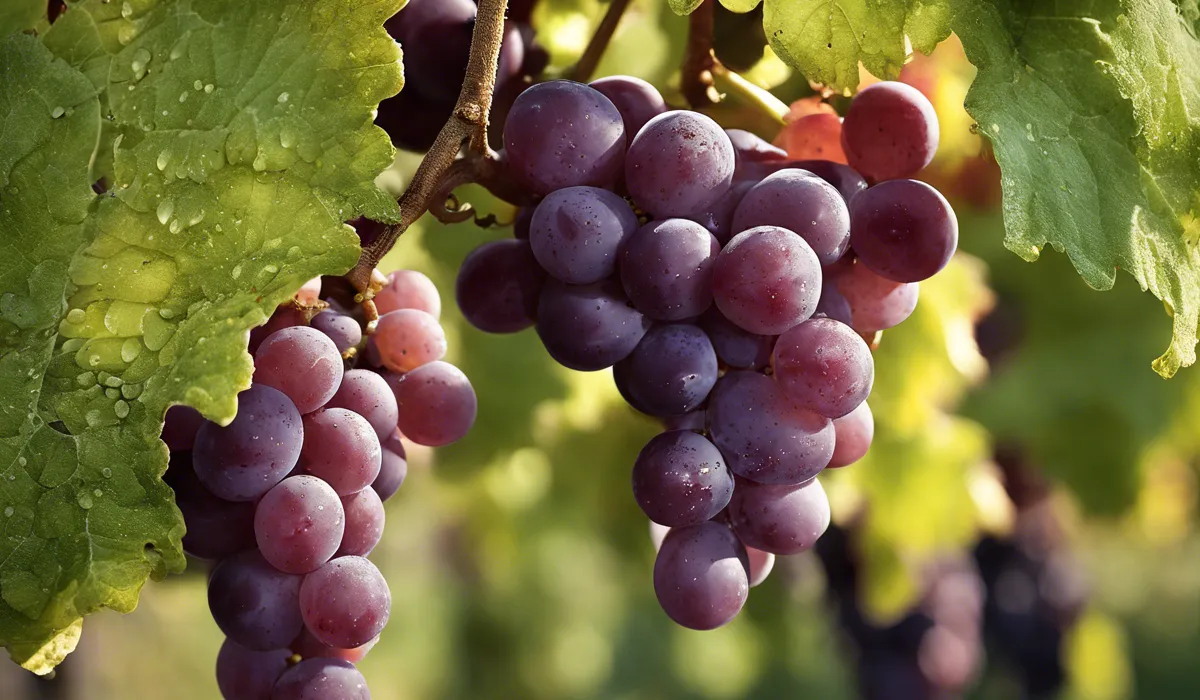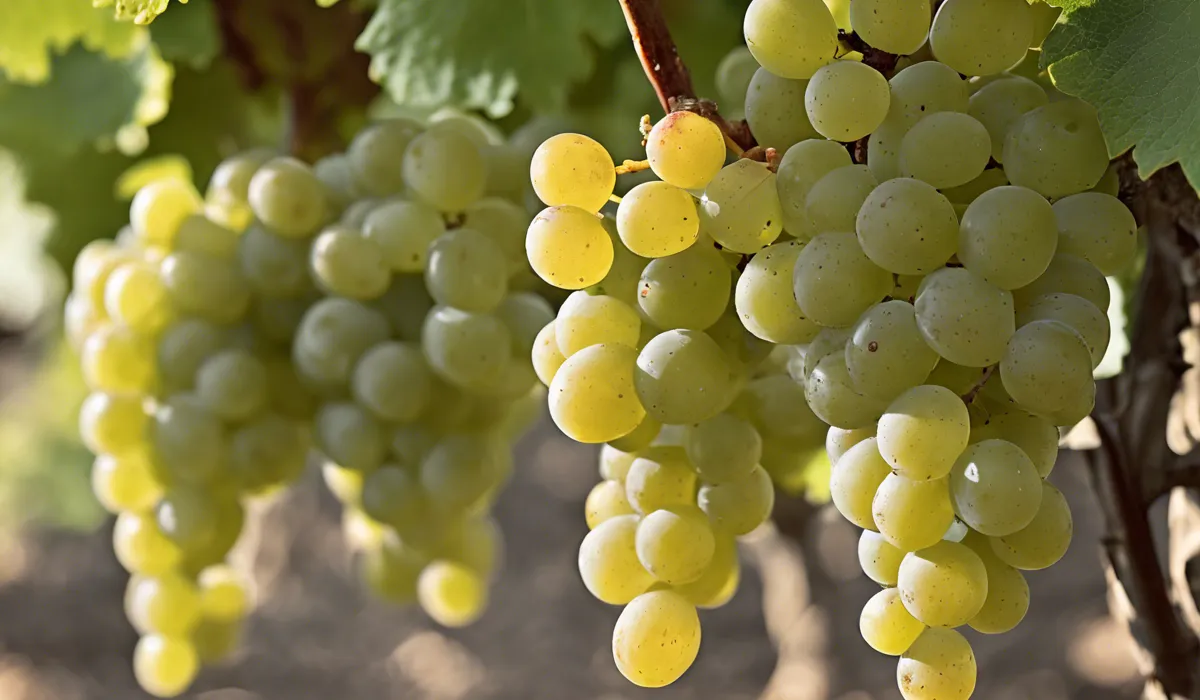It is not advisable to eat grapes with powdery mildew. While the fungus is not toxic, it can affect the flavor and quality of the grapes. If only a few grapes are affected, you can remove those and eat the rest after washing thoroughly.
Understanding Powdery Mildew on Grapes

Definition of Powdery Mildew
Powdery mildew is a common fungal disease that affects a wide variety of plants, including grapes.
It is characterized by white, powdery spots that appear on the leaves, stems, and sometimes the fruit of grapevines.
Caused by the fungus Erysiphe necator, powdery mildew thrives in warm, humid environments, and can quickly spread from plant to plant.
How Powdery Mildew Affects Grapevines?
The impact of powdery mildew on grapevines can be significant. It inhibits photosynthesis by blocking sunlight from reaching the plant’s surface, leading to reduced energy production.
This can stunt growth, weaken the vines, and result in poor fruit development. In severe cases, it can cause premature leaf drop and reduce yield and quality of the grape harvest.
Visible Signs of Powdery Mildew on Grapes
When inspecting grapes for powdery mildew, look for white or gray powdery spots on the upper surface of leaves, which can spread to cover the entire leaf.
Infected grapes might show a similar powdery covering and can become cracked or misshapen. These visible signs help growers identify the presence of the disease and take action to manage it.
Health Implications of Consuming Mildew-Affected Grapes

Risks of Eating Grapes with Powdery Mildew
While powdery mildew itself is not toxic to humans, consuming affected grapes can lead to an unpleasant taste and potentially spoil the fruit’s nutritional value.
It is generally not advisable to eat grapes with visible signs of powdery mildew, as the quality and flavor are likely compromised.
What Experts Say About Consuming Fungi-Affected Produce?
Experts in food safety typically recommend against eating fungi-affected produce, including grapes with powdery mildew.
While the health risks might be low, they suggest erring on the side of caution to avoid the possibility of ingesting any associated toxins or allergens that could be present due to the mildew.
Potential Toxins Produced by Mildew and Their Effects on Health
Potential toxins, such as mycotoxins, can be produced by certain types of mildew and molds. These toxins can cause health issues if ingested in large quantities.
However, powdery mildew on grapes is not known to produce harmful toxins, but it can lead to the development of secondary issues that could be harmful if not addressed properly.
Safe Consumption and Prevention Measures

How to Safely Handle and Consume Grapes with Signs of Mildew
If you come across grapes with mild signs of powdery mildew, you can remove the affected grapes before consuming the rest.
It’s important to wash the remaining grapes thoroughly under running water to help remove any traces of the mildew that might be present on the surface.
Cleaning and Preparation Techniques for Affected Grapes
For grapes with mildew, start by discarding any heavily affected fruit.
Rinse the remaining grapes well, and consider soaking them in a solution of water and baking soda, which may help remove some of the mildew.
Rinse the grapes again in clean water before consuming or using them in recipes.
Preventative Practices for Avoiding Powdery Mildew in Grape Cultivation
To prevent powdery mildew, grape growers should ensure good air circulation among vines, reduce excess humidity, and apply fungicidal treatments when necessary.
Choosing resistant grape varieties and maintaining clean vineyards are also key practices in preventing the spread of powdery mildew.
FAQs About Eating Grapes with Powdery Mildew
Can you eat grapes that are affected by powdery mildew?
It is not recommended to eat grapes with powdery mildew as it can affect the flavor and quality, even though the fungus is not toxic.
Is powdery mildew on grapes harmful to humans?
Powdery mildew on grapes is not toxic to humans, but it can make the grapes less palatable.
What should you do if only a few grapes have powdery mildew?
If only a few grapes are affected by powdery mildew, remove those grapes and thoroughly wash the rest before eating.
Can washing grapes remove powdery mildew?
Washing grapes can help remove some of the powdery mildew, but it may not eliminate all of it or restore the affected grapes’ flavor and quality.
Are there any risks to eating grapes with powdery mildew?
While there are no toxic risks, eating grapes with powdery mildew can be unappetizing due to altered flavor and quality.
Final Thoughts
Eating grapes with powdery mildew is not recommended due to potential impacts on taste and quality. While the fungus isn’t poisonous, it can spoil the grape’s flavor.
If the mildew affects only a minority of grapes, removing the afflicted ones and thoroughly cleaning the rest may make the unaffected grapes suitable for consumption.
